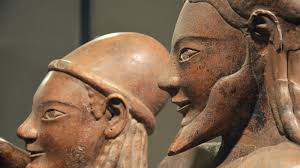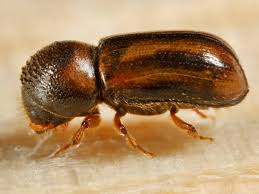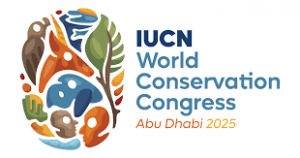Today’s Current Affairs: 23rd July 2025 for UPSC IAS exams, State PSC exams, SSC CGL, State SSC, RRB, Railways, Banking Exam & IBPS, etc
Table of Contents
Tayfun Block-4

Turkey recently unveiled its first hypersonic ballistic missile, the Tayfun Block-4, in Istanbul.
- Tayfun Block-4 is the first hypersonic ballistic missile developed by
- It is the hypersonic version of the Tayfun missile, Turkey’s longest-range nationally produced ballistic missile.
- The term “Hypersonic” refers to a speed at least five times the speed of sound (also called Mach-5).
- Tayfun Block-4 was developed by Turkish defense company Roketsan.
- It is 6.5 meters long and weighs about 2,300 kilograms.
- It is distinguished by its high speed and advanced manoeuvrability.
- It has an operational range of up to 800 kilometers, with plans to extend it to 1000 kilometers in the future.
- The guidance system is based on GPS and GLONASS technologies combined with the inertial system (INS), which guarantees high accuracy, with a maximum error of only 5 meters per shot.
- The missile is equipped with a fragmentation warhead and uses ‘solid composite’ fuel, making it suitable for quick and effective strikes against strategic targets such as air defense systems, command centers and critical infrastructures.
Etruscans:

A rare, untouched tomb from the Etruscans, a civilization that predated the Roman Republic, has been recently discovered in central Italy.
- The Etruscans were a Mediterranean civilization that flourished between the 8th and 3rd centuries BCE.
- The Etruscans, also known as the Tyrrhenians, inhabited the area that is now
- Their country was called Tuscia, or Etruria.
- Etruria was located in the central part of the Italian peninsula.
- Etruria was bounded on the west by the Tyrrhenian Sea, on the north by the Arno River, and on the east and south by the Tiber River.
- They had a strong navy and dominated the seas on the western coast of Italy.
- The Etruscans possessed the biggest iron reserves in the whole of the western Mediterranean.
- Many features of Etruscan culture were adopted by the Romans, their successors to power in the peninsula.
- Etruscans were the first in the Mediterranean region to construct a city on the basis of a grid plan.
- In this plan, most of the streets were laid in a north-south direction with a few streets crossing them from the east-west direction.
- Romans later followed this plan while laying out military camps and new cities.
Winter Fog Experiment:

The Winter Fog Experiment (WiFEX), has completed a remarkable milestone of ten successful years of dedicated research into North India’s dense winter fog.
- It was launched in the winter of 2015 at Indira Gandhi International Airport (IGIA), New Delhi.
- It was led by the Indian Institute of Tropical Meteorology (IITM) under the Ministry of Earth Sciences (MoES), with support from the India Meteorological Department (IMD) and the National Centre for Medium Range Weather Forecasting (NCMRWF).
- WiFEX is one of the world’s few long-term open-field experiments focused solely on fog — an elusive winter hazard that regularly disrupts air, rail, and road transport across the Indo-Gangetic Plain.
- The objectives of the Winter Fog Experiment (WiFEX) are to develop better now-casting (next 6 hours) and forecasting of winter fog on various time and spatial scales.
- To help reducing fog’s adverse impact on aviation, transportation and economy, and loss of human life due to accidents
- WiFEX scientists have deployed advanced instruments, micrometeorology towers, ceilometers, and high-frequency sensors to collect detailed data on temperature layers, humidity, wind, turbulence, soil heat, and aerosols — building an unmatched dataset that reveals how dense fog forms and disperses.
- These insights have powered the development of a high-resolution (3 km) probabilistic fog prediction model, which now stands among the region’s most advanced tools for operational forecasting.
- This model can reliably predict when fog will begin, how dense it will be, how long it will last, and when it will clear — achieving more than 85% accuracy for very dense fog (visibility below 200 meters).
Ambrosia beetle:

Rubber plantations in Kerala have been under threat since an ambrosia beetle-fungus alliance has been attacking trees, causing severe leaf fall and rapid drying.
- Ambrosia beetles get their name from the ambrosia fungi that call the beetle their home. The name ‘ambrosia’ is not taxonomic but ecological.
- These beetles are native to Central and South America.
- They were first reportedin India in the cashew trees of Ponda, Goa, in 2012.
- The beetle has been reported to share a mutualistic relationship with two fungal species, Fusarium ambrosia and Fusarium solani.
- These beetles attack dead or infected trees, although they’re also known to attack stressed trees.
- At times, the stressed trees release ethanol, a volatile compound that the ambrosia beetles can sense and attack.
- The beetles don’t feed on the woody bark of trees; the fungi do.
- The beetles bore tunnels called galleries in the bark, carry fungi into the galleries, and farm the fungi to concentrate nutrients.
- The beetles and their larvae feed on nutrient-rich fungal mycelia. The fungi also release enzymes that weaken the wood, allowing beetles to penetrate deeper.
IUCN World Conservation Congress:

The International Union for Conservation of Nature (IUCN) World Conservation Congress 2025 will be hosted in Abu Dhabi to decide on use of genetic tools in conservation.
- It is the largest gathering of nature conservation experts, leaders and decision-makers in the world.
- It will help shape global priorities for nature conservation and climate change for the coming decade and beyond.
- It is held once-every-four-years.
- It has three components
- Forum: It is the largest knowledge marketplace for conservation and sustainable development science, practice and innovation.
- Exhibition: In the Exhibition, IUCN Members and Commissions, businesses, partners, and academia host pavilions, booths and events.
- Member’s Assembly: It is IUCN’s highest decision-making body. During the Assembly, IUCN’s Member organisations vote on pressing conservation and sustainable development issues.
- Theme of IUCN Congress 2025: Under the theme “Powering transformative conservation”, the IUCN Congress 2025 will tackle five critical themes, each driving the bold, transformative change needed to secure a sustainable future for both nature and humanity.
IUCN:
- IUCN (International Union for Conservation of Nature) is a membership Union of government and civil society organisations.
- It was created in 1948, IUCN is now the world’s largest and most diverse environmental network, harnessing the knowledge, resources.
Bitra Island : In News

The government has initiated the acquisition of Bitra Island in Lakshadweep for defence purposes.
- Bitra Island is the smallest inhabited island in the Union Territory of Lakshadweep.
- It is Situated at 11°36′N, 72°11′E, Bitra lies about 483 km (261 nautical miles) from Kochi, the gateway to Lakshadweep.
- It is part of the Aminidivi subgroup and spans 0.57 km in length and 0.28 km at its widest.
- The climate of Bitra closely resembles that of Kerala.
- :It is surrounded by a vast lagoon area of 45.61 sq km, supporting rich marine biodiversity.
- As per the 2011 census , it has a population of 271, mostly dependent on fishing and coconut cultivation.
- Bitra is strategically located near major shipping lanes and is set to host a defense establishment, complementing naval bases at Kavaratti (INS Dweeprakshak) and Minicoy (INS Jatayu).
Fungus Fighting Pineapple:
Indian researchers at Bose Institute have developed a fungus-resistant pineapple by overexpressing the AcSERK3 gene, offering a sustainable solution against Fusariosis, a devastating fungal disease. A genetically modified pineapple variety engineered to resist Fusarium moniliforme, a fungus causing Fusariosis, which destroys stems, leaves, and fruits. Developed by Bose Institute (DST) scientists Prof. Gaurab Gangopadhyay and Dr. Soumili Pal. Fusariosis leads to stem warping, blackened leaves, and internal fruit rot, causing heavy crop losses. Traditional breeding methods struggle to counter fast-evolving fungal strains.
India’s Achieved 6 Crore Sickle Cell Anemia Screening under the National Mission:
India has achieved a major public health milestone by completing 6 crore screenings under the National Sickle Cell Anemia Elimination Mission, launched to combat the genetic blood disorder predominantly affecting tribal populations. The mission is a cornerstone in India’s health policy framework aimed at eliminating sickle cell anemia by 2047 through early detection, awareness, and comprehensive care strategies.Sickle Cell Disease (SCD) is a hereditary blood disorder characterized by abnormally shaped red blood cells, leading to blockages in blood flow and resulting in pain, infections, and organ damage. It primarily affects tribal and economically disadvantaged populations in India. Recognizing the growing burden of this disease, the National Sickle Cell Anemia Elimination Mission was launched by Prime Minister Narendra Modi on 1st July 2023 in Shahdol, Madhya Pradesh.
Public Sector Banks Write Off Over ₹12 Lakh Crore In last 9 Years:
The Ministry of Finance recently informed the Rajya Sabha that Public Sector Banks (PSBs) have written off more than ₹12 lakh crore in non-performing assets (NPAs) between FY2016 and FY2025. Despite the massive write-offs, efforts to recover the loans continue under various legal mechanisms. Simultaneously, a large-scale recruitment drive for 48,570 positions is in progress across PSBs, marking an important development in the banking sector. This development holds relevance for competitive exams under economy, banking, and governance sections.As per RBI guidelines, banks are allowed to write off NPAs after four years if full provisioning has been made. However, write-offs do not waive off borrower liabilities; banks continue to pursue recovery through legal channels
Suhani Shah Became First Indian To Win ‘Oscar for Magicians’ at FISM 2025:
Mentalist Suhani Shah from Rajasthan has become the first Indian to win the ‘Best Magic Creator 2025’ award at the Fédération Internationale des Sociétés Magiques (FISM)—popularly known as the Oscars for magicians. The award was presented at the prestigious FISM World Championship held in Torino, Italy, recognizing her excellence in the online category of magic.The FISM World Championship of Magic is an international competition organized every three years by the Fédération Internationale des Sociétés Magiques. Founded in 1948, FISM is considered the highest global platform for magicians, showcasing the best talents across multiple categories such as stage magic, close-up magic, and online magic.
India’s First Mining Tourism Project in Jharkhand:
Jharkhand is set to become the first Indian state to launch a Mining Tourism Project, aiming to showcase its rich mineral heritage through guided mine tours and cultural experiences. This initiative, led by the state government and Central Coalfields Limited (CCL), seeks to diversify tourism while educating the public about mining practices and local history.Inspired by Chief Minister Hemant Soren’s visit to the Gava Museum of Mines in Barcelona, the state is now opening parts of its mining sector to public tourism through formal partnerships like the MoU with CCL.
National Broadcasting Day 2025:
National Broadcasting Day, observed on July 23 every year, commemorates the start of organised radio broadcasting in India with the formation of the Indian Broadcasting Company (IBC) in 1927. It celebrates the role of All India Radio (AIR) in shaping public communication, education, and national integration over nearly a century. From Akashvani to modern digital broadcasting, India’s radio journey has seen transformative milestones.National Broadcasting Day is celebrated annually on July 23 to mark the establishment of the Indian Broadcasting Company (IBC) in 1927, which began India’s formal radio services. Before IBC, the first ever radio transmission in India took place in June 1923 by the Radio Club of Bombay.




